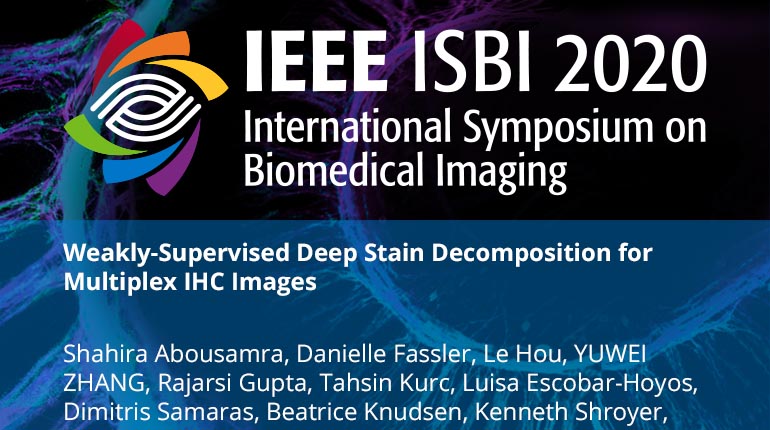
Already purchased this program?
Login to View
This video program is a part of the Premium package:
Weakly-Supervised Deep Stain Decomposition for Multiplex IHC Images
- IEEE MemberUS $11.00
- Society MemberUS $0.00
- IEEE Student MemberUS $11.00
- Non-IEEE MemberUS $15.00
Weakly-Supervised Deep Stain Decomposition for Multiplex IHC Images
Multiplex immunohistochemistry (mIHC) is an innovative and cost-effective method that simultaneously labels multiple biomarkers in the same tissue section. Current platforms support labeling six or more cell types with different colored stains that can be visualized with brightfield light microscopy. However, analyzing and interpreting multi-colored images comprised of thousands of cells is a challenging task for both pathologists and current image analysis methods. We propose a novel deep learning based method that predicts the concentration of different stains at every pixel of a whole slide image (WSI). Our method incorporates weak annotations as training data: manually placed dots labelling different cell types based on color. We compare our method with other approaches and observe favorable performance on mIHC images.
Multiplex immunohistochemistry (mIHC) is an innovative and cost-effective method that simultaneously labels multiple biomarkers in the same tissue section. Current platforms support labeling six or more cell types with different colored stains that can be visualized with brightfield light microscopy. However, analyzing and interpreting multi-colored images comprised of thousands of cells is a challenging task for both pathologists and current image analysis methods. We propose a novel deep learning based method that predicts the concentration of different stains at every pixel of a whole slide image (WSI). Our method incorporates weak annotations as training data: manually placed dots labelling different cell types based on color. We compare our method with other approaches and observe favorable performance on mIHC images.
 Cart
Cart Create Account
Create Account Sign In
Sign In





